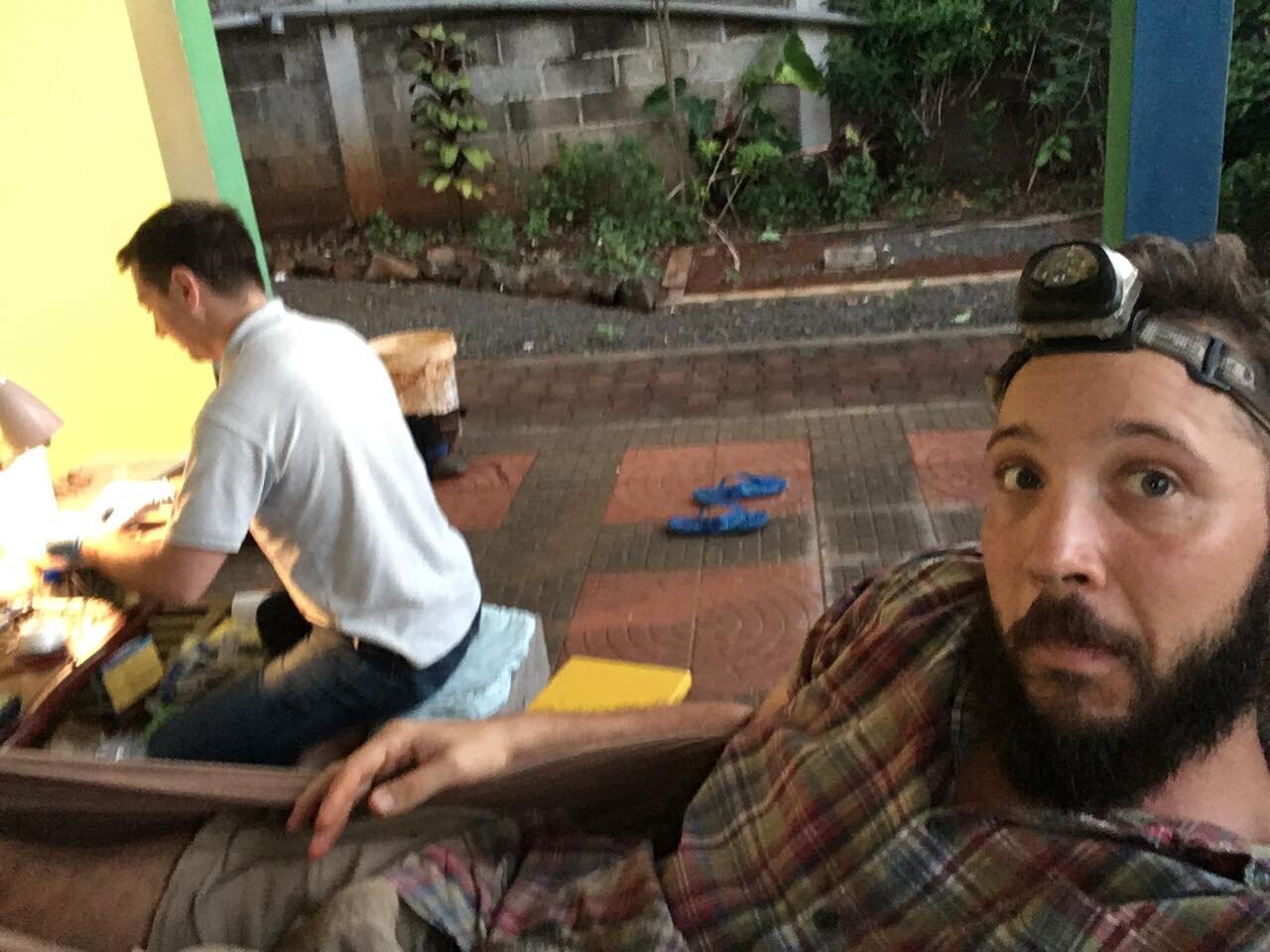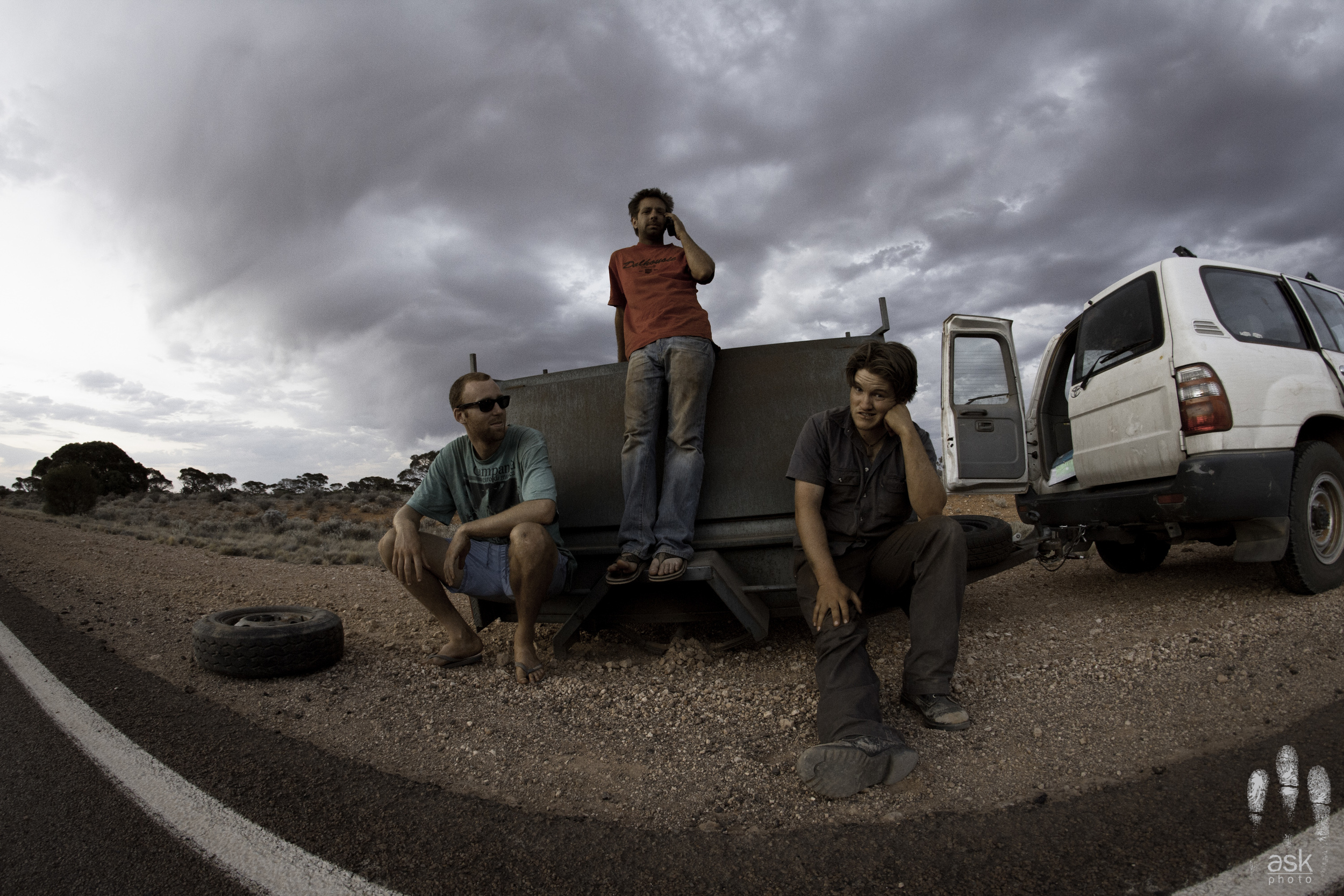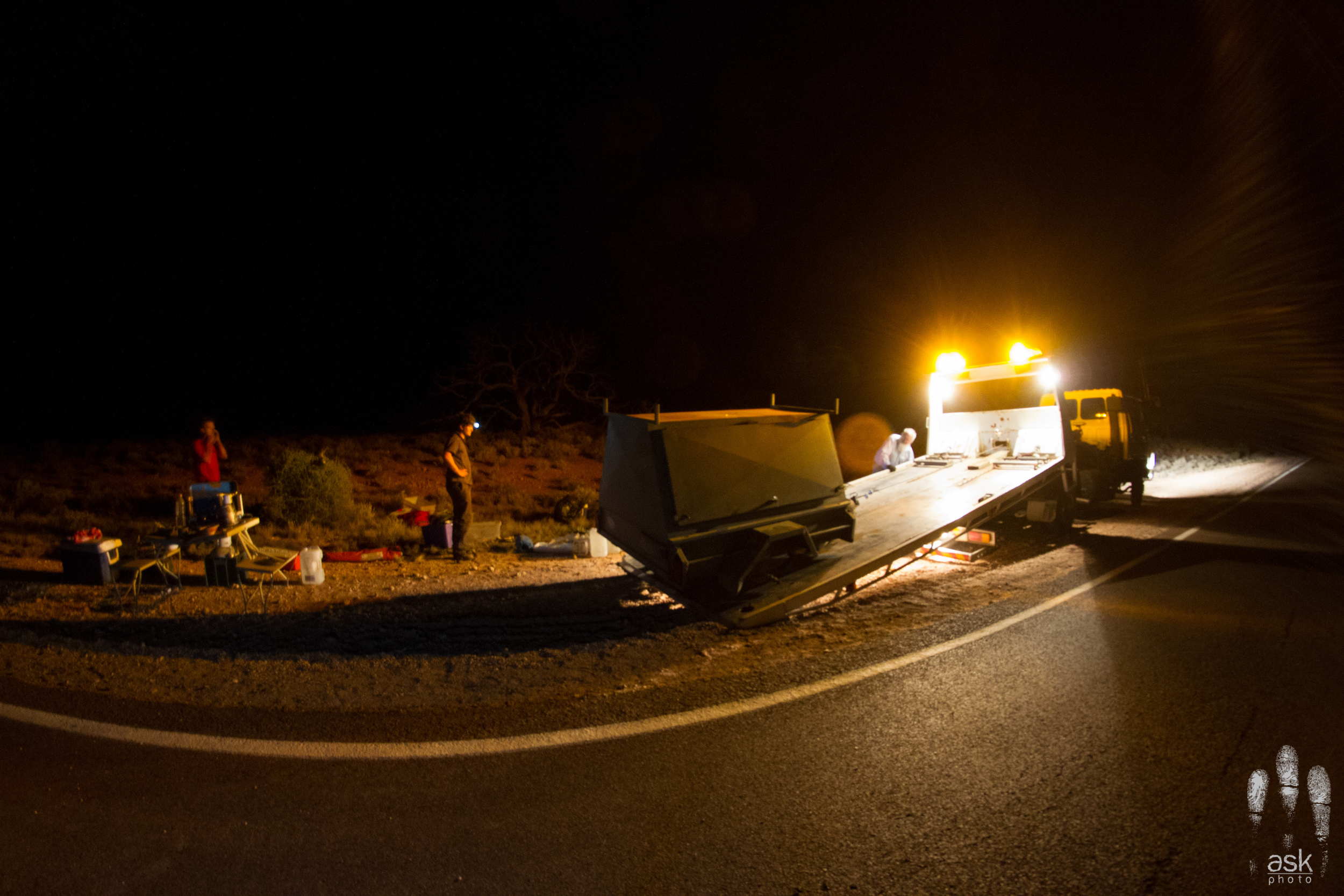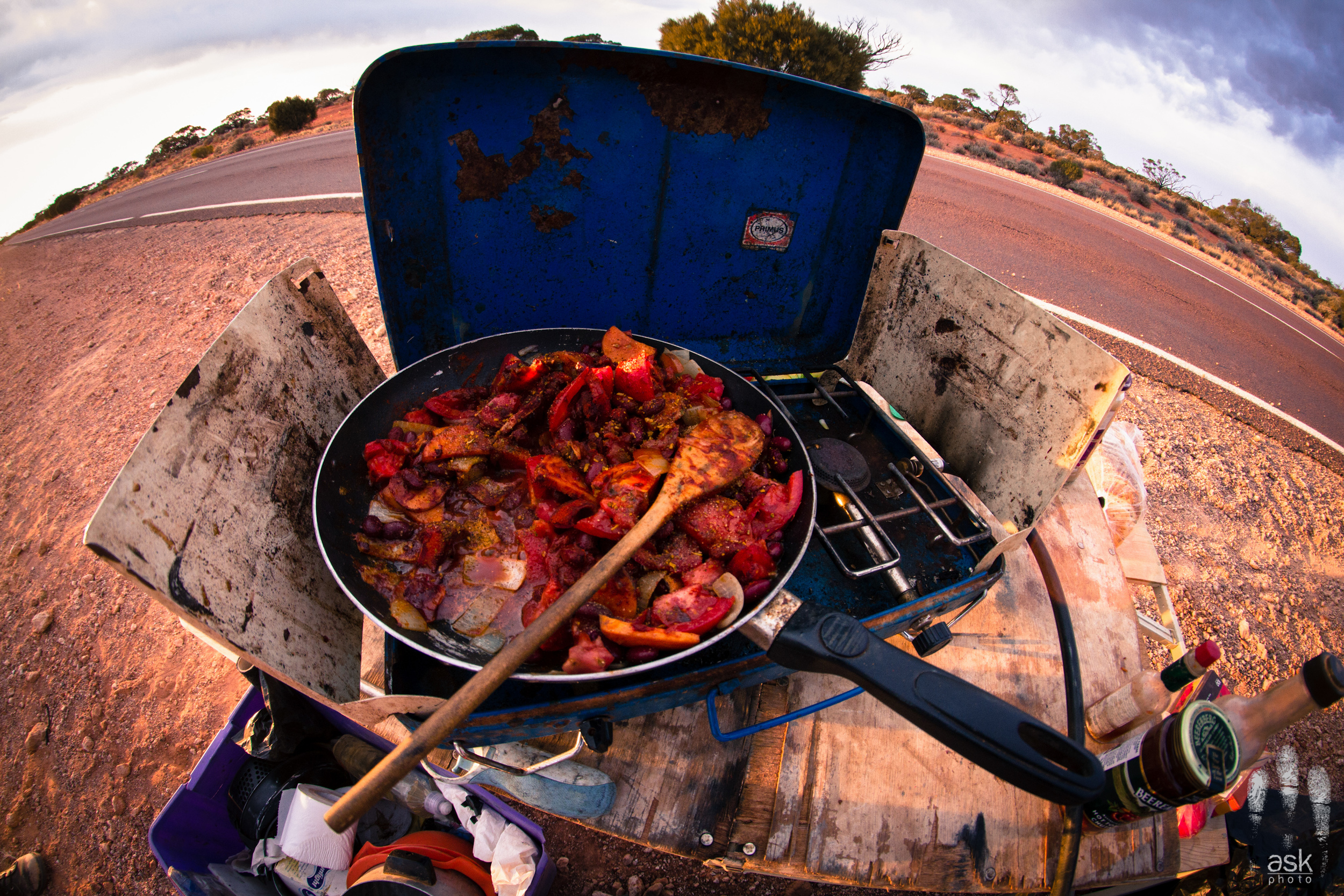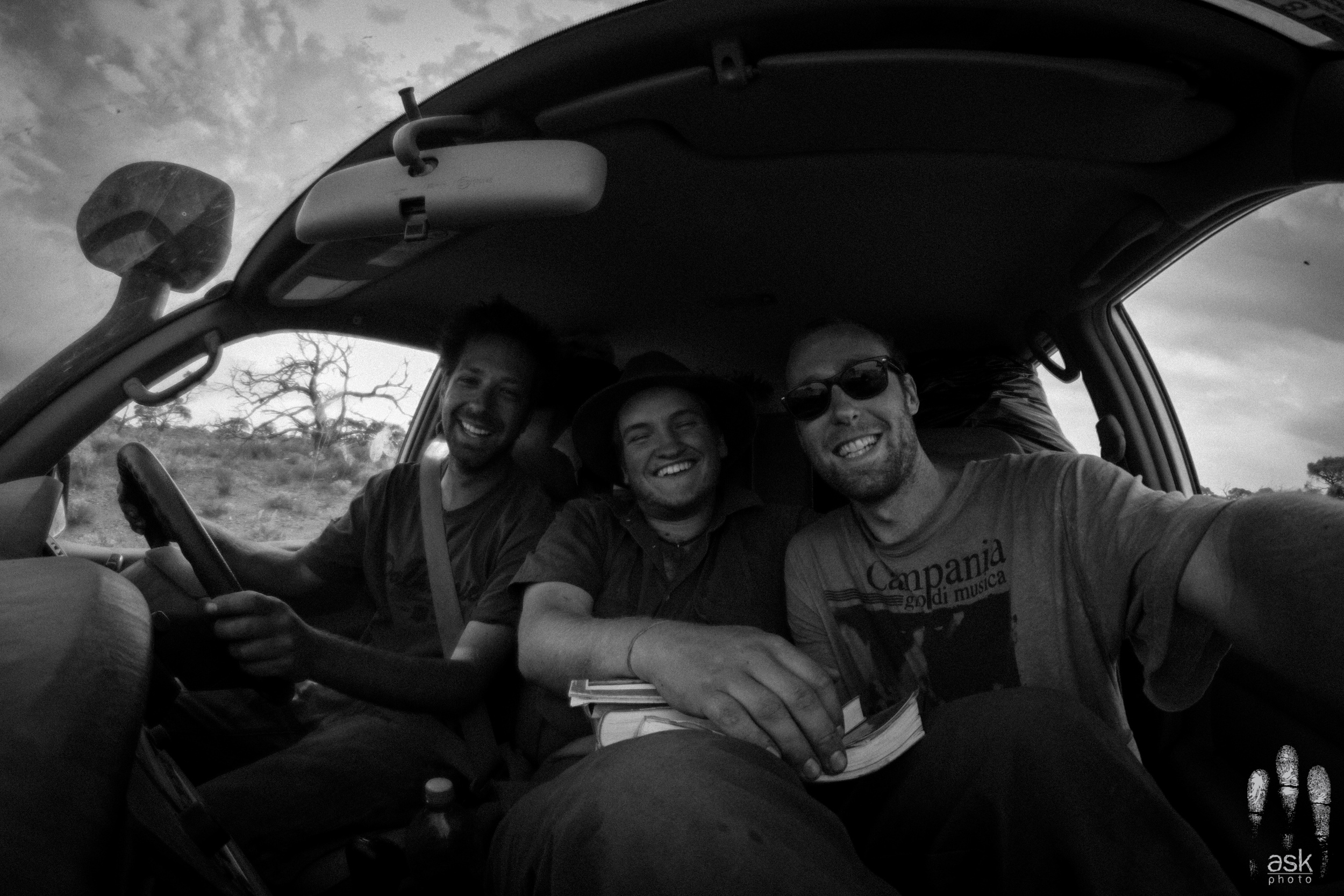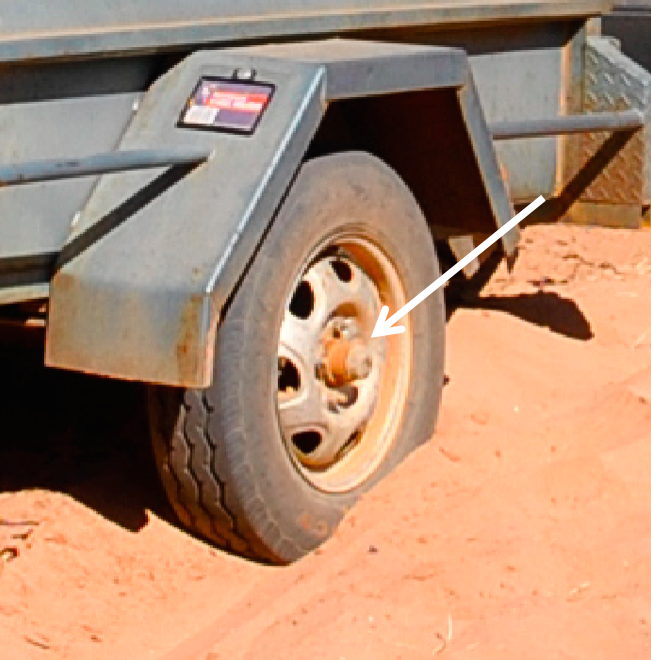I was pretty sick throughout my visit to Mauritius, and could barely muster up the energy to go searching for animals, let alone take pictures of them. All the pictures below were kindly provided by Drs James Baxter-Gilbert and Julia Riley.
I was in Mauritius recently, invited by a friend to add a neural dimension to his research exploring how invasive toads evolve in their new environments. We were all dedicated animal enthusiasts, so we took advantage of being in Mauritius to try and track down as many of the native animals as possible. Turns out, that isn’t so easy.
An old friend of mine, Dr. James Baxter-Gilbert, was in Mauritius with a small team to research how the guttural toad, introduced by humans to the island, had adapted to their new home. He invited me to come add a brain-adaptation dimension to his project. How could I say no?
Perfusing toad brains in Pamplemousses, Mauritius, under the rigorous supervision of lead toad researcher Dr. James Baxter-Gilbert.
Mauritius is a small island off the east coast of Madagascar. Like most small, tropical islands, the environment on Mauritius has been devastated by humans and the invasive plants and animals that come with us. Chances are, if you just wander around Mauritius, you’ll see nothing but invasive animals and weeds. Finding the native wildlife takes effort. We put in some effort, and here’s what we found:
Mauritius is plagued by numerous introduced species, such as the boring and mundane Aldabra giant tortoise, which should definitely not distract one from the search for native wildlife.
Mammals
Mauritius has only three native species of terrestrial mammal, all bats. We didn’t go looking for any aquatic stuff.
Mauritian Flying Fox (Pteropus niger): Compared to the other fly foxes I’ve seen, this one is surprisingly day-active. As such, it’s s relatively easy animal to see, even if you don’t know where any roosts are. Relatively is the key term, though, you still have to go somewhere like the Black River Gorges National Park or Vallée de Ferney where a little forest remains. But by keeping your eyes out in places like this, it shouldn’t take long to see one fly by.
If you want a truly spectacular flying fox experience, walk down the Maccabée Trail from the Maccabée lookout to the Black River Entrance in Black River Gorges National Park. The first two kilometres of this trail are incredibly steep - I would not recommending walking it uphill - but at one point you come across a ledge you can walk out onto, and in the valley below the ledge is a huge flying fox camp. Watching from above as the giant bats circle was an incredible experience.
Mauritian Tomb Bat (Taphozous mauritianus): This is the common insectivorous bat of Mauritius, and can be seen at night hunting insects around streetlights. We saw many driving away from the airport after I arrived.
Target for next time:
Natal Free-tailed Bat (Mormopterus acetabulosus): We came very close to finding this bat, but ultimately we were exhausted after days of working and couldn’t muster up the energy to go out at dusk on our last night and try to find one of the cave openings. I found the locations where the caves are supposed to be on Google Maps, but it still would require a bit of work to actually go to the site and find the hole in the ground. That can’t be seen from a satellite image.
From a conservation perspective, this bat is an interesting oddity. At the moment, it may be the most endangered animal on the island. There are four known roosting caves, none of which are protected. Two seem to be located in densely populated suburban neighbourhoods and are apparently used as places to dump trash. At the same time, the otherwise passionate and very active conservation organizations on the island seem strangely ambivalent to the bat - most of those I talked to, including some relatively senior people - didn’t know it existed. I can’t fathom why this is, when they are so incredibly knowledgeable and mobilized when it comes to the island’s native birds and reptiles.
Part of the problem may be the insanely idiosyncratic way the bats have been named. Of the two insectivorous bats on the island, the one that is common and widespread, not only on Mauritius but also on Madagascar and the African mainland, is called the Mauritian tomb bat. In contrast, the bat that is found only on Mauritius, and even there is very rare, is named the Natal free-tailed bat. It’s named after a South African local because a vagrant individual that was collected in Natal and described as a new species before anyone realized that it was a Mauritian bat that had gotten very, very lost. So, at the end of the day we have a special, uniquely Mauritian species in desperate need of help named after a South African location, and a widespread African species named for an island that makes up a tiny, insignificant portion of its range. Not helpful from a conservation perspective, I think.
Birds
The terrestrial birds native to Mauritius that still exist today can essentially be counted on your fingers, that’s how much the place’s avifauna has been devastated. Driving around Mauritius, you’re likely to see lots of land birds: finches, corvids, doves, sparrows, etc. They’re all introduced pests. Here are the native species we managed to find:
Mascarene swiftlet (Aerodramus francicus): This is the only native bird you’re likely to just happen across, excluding waders at the right time of year. We saw it from the front porch of our house in Pomplemousses as well as at the birding hotspots of Black River Gorges National Park and Ile aux Aigrettes.
White-tailed Tropicbird (Phaethon lepturus): This spectacular bird is easily seen flying in the gorges of Black River Gorges National Park. We didn’t see it anywhere else.
Mauritius Kestrel (Falco punctatus): The most reliable place to see Mauritius kestrel is Vallée de Ferney, a privately-held reserve where a habituated pair is fed every day at noon. We missed the feeding time, but even at 3pm, without the promise of food, we saw two individuals. We also saw one at the Black River entrance to the National Park, but my impression is that they are regularly - but not reliably - seen in the park.
One of Mauritius’s spectacular and highly-promoted success stories, saving the Mauritius kestrel seems to have empowered local Mauritians to be proactive in saving their other endemic species. In particular, I was impressed with how proactively people at the Mauritian Wildlife Foundation and the Vallée de Ferney talked about saving species that are still declining. Often, people in these sorts of roles seem frustrated, downtrodden, and resigned to failure. The only other place where I have met people as enthusiastic about researching and innovating new ways to save species is New Zealand. And I think New Zealand is probably the best in the world at modern conservation.
Mauritius Kestrel (Falco punctatus)
Pink Pigeon (Nesoenas mayeri): Most easily seen at the Petrin entrance to the National Park, in what they call the “aviary”. It’s actually a cluster of feeding stations inside what used to be a closed aviary, but which has been dismantled. Also relatively easily seen, at least in flight, at the Black River entrance to the park, the Vallée de Ferney, and the Ile aux Aigrettes.
Echo Parakeet (Psittacula eques): Easily seen on the walk from the Petrin entrance of the Black River Gorges National Park to the Maccabée Lookout, after you get out of the pine tree forest and into the native forest. We didn’t see any anywhere else, including other locations in the National Park.
Mascarene Martin (Phedina borbonica): I was not prepared for how hard this species was to find. We saw a few, maybe a handful, while approaching what is just called “Viewpoint” (-20.391814, 57.434228) in Black River Gorges National Park, and a few more looking out from that Viewpoint. I think I also saw one while driving over a bridge - I don’t remember which one - so they might be findable outside the national park. But I was certainly expecting them to be more common.
Mauritius Cuckooshrike (Coracina typica): This bird, considered for a long time not to be a conservation concern, has been declining quite a bit recently. Nobody seems to know quite why, they used to be found even in forests composed entirely of “weed” species. However, the Mauritian Wildlife Foundation and the Vallée de Ferney seemed to be on the case, and are actively working on its recovery. I found a male on a guided bird tour with the Mauritian Wildlife Foundation that started from the Petrin entrance to the National Park and went along the trail to the Maccabée Lookout, but my guides were quite pessimistic we’d find one, and were ecstatic when it turned up. We watched it forage for caterpillars from a close distance for about 20min before finally moving on. I got the impression I was very lucky to have had this experience.
There is also a male with a known territory in the Vallée the Ferney and apparently you can request special sit-and-wait tours first thing in the morning just to see it.
Mauritius Bulbul (Hypsipetes olivaceus): Relatively easily seen in the Black River Gorges National Park, Vallée de Ferney, and Ile aux Aigrettes.
Mauritius Olive White-eye (Zosterops chloronothos): Hard to find on Ile aux Aigrettes, where we saw one group of four. Basically impossible to find elsewhere.
Mauritius Grey White-eye (Zosterops mauritianus): Easily found in the Black River Gorges National Park and Vallée de Ferney, otherwise sparsely distributed around the island.
Mauritius Fody (Foudia rubra): Easily found on Ile aux Aigrettes, where we saw and heard so many that eBird was sceptical. I watched one gorgeous male forage for lerp about 30 cm from my face as we waited for the boat back to the mainland. Present but hard to find in the Black River Gorges National Park.
Mauritius Fody (Foudia rubra)
Targets for next time:
Mascarene Paradise Flycatcher (Terpsiphone bourbonnensis): This bird can be seen in Black River Gorges National Park, but it is sparse and we didn’t manage to find it. Apparently it’s easier to see in the Ebony Forest Reserve but I didn’t have time to get there.
Herald Petrel (Pterodroma heraldica): One of the world’s rarer petrels, this species breeds on a least one small island off the northern tip of Mauritius. If you’re there during the breeding season, I think it would be worth asking the Mauritian Wildlife Foundation to organize a pelagic birding tour to the area to try and see it. This is a specialty tour, and you have to ask the Foundation for it specifically as they don’t advertise it on their website.
Reptiles
Telfair’s Skink (Leiolopisma telfairii): This skink is huge and definitely worth the effort to see. They aren’t common on Ile aux Aigrettes but we saw several in and around the man-made structures on the island.
Telfair’s Skink (Leiolopisma telfairii)
Ornate Day Gecko (Phelsuma ornata): The common day gecko of Mauritius, we saw many on the plants and outside walls of our accommodation, as well as everywhere else except higher elevations. They occur in basically plague numbers on Ile aux Aigrettes.
Ornate Day Gecko (Phelsuma ornata)
Blue-tailed Day Gecko (Phelsuma cepediana): The “other” common day gecko around Mauritius, we found them in small numbers amongst the ornate day geckos in the garden. Common at all elevations in Black River Gorges National Park.
Blue-tailed Day Gecko (Phelsuma cepediana)
Lowland Day Gecko (Phelsuma guimbeaui): Not easy to find, it is apparently absent from spots that used to be considered reliable for it. I saw it in two places. The first, where they appeared quite numerous, was on what’s labelled as the Plain Champagne Road on Google Maps but which people called the "Ridge Road”, between the Varangue Sur Morne restauratant and the village of Charmarel. The second, where they were significantly less numerous, was on the trail to the Macchabée Viewpoint from the Petrin entrance to the National Park, after leaving the pine forest and entering the native forest. Apparently they are partial to the invasive traveller’s palm, look for them basking on the palm stalks, below the leaves and above the trunk.
Lowland Day Gecko (Phelsuma guimbeaui)
Highland Day Gecko (Phelsuma rosagularis): The hardest of the mainland day geckos to find, we only saw it in one place, on the trail between “Viewpoint” (-20.391814, 57.434228) and the Maccabée Viewpoint. They are apparently preferential to exposed branches on trees that have grown above the canopy (which is quite low at that elevation), so a pair of binoculars will help with the search.
The guides with the Mauritian Wildlife Foundation knew some spots for them on the trail from Petrin to the Maccabée Viewpoint, but because I had seen them previously we didn’t spend much time searching for them. Beware, also, because in this area they are sympatric with the lowland day gecko. My guide even showed me a tree where she finds all three species (the blue-tails being the third found in the area).
Targets for next time:
Bojer’s Skink (Gongylomorphus bojerii): Though not present on Ile aux Aigrettes, it is present on some of the islands to the northeast of it, like Ile de la Passe. Some of these islands are also open to the public, though you have to charter a private boat to get there. Depends how much you want to spend to see a rare, small, brown skink, I guess.
It’s also present at some locations in the Black River Gorges National Park. I was told it can be found at Petrin around the picnic area and aviary, but I couldn’t find one there. The rest of the toad research team had found some at one of their research sites - not accessible to the public - before I joined them.
Bojer’s Skink (Gongylomorphus bojerii)
Günther’s Day Gecko (Phelsuma guetheri): A giant and very strange day gecko, there are small numbers of these on Ile aux Aigrettes, but they are very hard to find. Make sure to go on the extended 2hr tour, which takes you to the centre of the island, because the standard 45 min tour doesn’t go to where they’re found. Look for them on the taller knotty trees in the centre of the island, but even then they are difficult to find. When the staff find a tree with a resident Günther’s gecko, the mark the tree with what looks like a metal army tag. So search any trees you find decorated with silver metal trinkets extra thoroughly! We searched and searched and though we found many (hatched) eggs, we didn’t see any actual geckos. But on the positive side, it looks like recruitment is good, so hopefully finding them will get easier!
Hatched Günther’s gecko eggs.
Bouton’s Skink (Cryptoblepharus boutonii): This species is surprisingly rare, considering the success of the genus as a whole in colonizing small oceanic islands. There are a few spots on the mainland where they can still be found, in the rocks right in the surf. However, it sounds like they’re much easier to find on the islands, including some of the publicly accessible ones in the south-east. Unfortunately, they’re not present on Ile aux Aigrettes.
